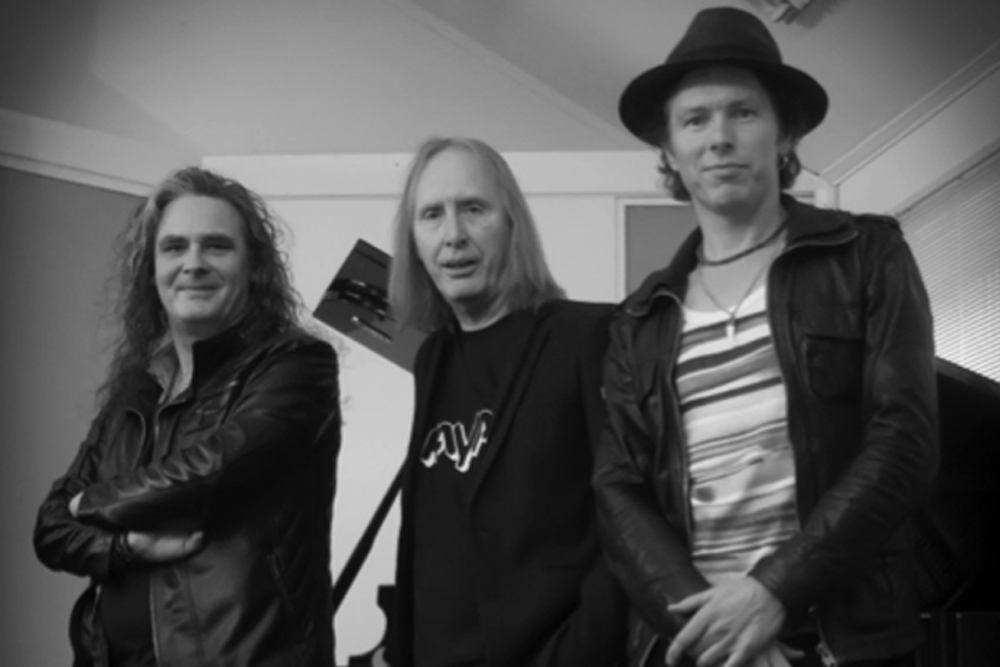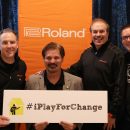Audio electronics stalwart JBL marked its 70th anniversary last year as a consumer and professional speaker maker. The company was established in 1946 by James B. Lansing—the initials imply the name—who was also one of the founders of Altec Lansing. Parent company Harman has secured patents on more than 6,000 innovations, many of which were spawned at JBL. Their studio monitors can be found in professional rooms throughout the world and their speakers now blast out tunes in a range of cars, Ferraris included.
Headquartered in Northridge, CA, the company was snapped up by Harman in the late ‘60s. The parent company was likewise acquired by Samsung in March of this year. Music Connection spoke with 40-year JBL veteran Mark Gander, Director of JBL Technology, to gain insight into what fosters a successful company and what makes it thrive.
“Technology and innovation in the service of high fidelity sound reproduction,” are the keys to surviving for nearly a century in the business, Gander asserts. “James B. Lansing started making radio speakers in the ‘20s and was involved in setting the first standard for cinema sound. He developed the woofers and compression drivers that were integrated into the Shearer Horn system, which won an Academy Award because it became the standard for motion picture sound reproduction. That’s important because everything the industry does—studio monitors, sound systems, etc.—stems from that. We’re also one of the few companies that makes our own transducer components.”
Another element of JBL’s secret to longevity is the employment of new materials and methods. It’s also helped them to remain at the forefront of the industry. “In the eighties, we were the first company to utilize titanium for tweeter and compression driver diaphragms,” Gander explains. “The industry had always used a thin aluminum foil and formed it into domes. Being in Southern California, we were near the aerospace industry and one of the first to learn about things like the [Lockheed] SR-71 Blackbird that was made [mostly] out of pure titanium. We learned that the industry could also form that into a thin foil.”
Titanium is heavier than aluminum, but also stronger. Consequently, the foil can be thinner. To illustrate, while aluminum foil in tweeters may be two or three one-thousandths of an inch thick, titanium would only be one. As revolutionary as titanium once was, though, JBL now largely employs high-polymer exotic synthetic materials (plastics, essentially) that are both stiff and light.
JBL is comprised of three primary divisions: consumer, professional and automotive. Despite their different end-user orientations, they tend to trade ideas, developments and resources across departments. “There’s a tremendous amount of sharing,” Gander says. “We’re big in all divisions on acoustic research into the psychoacoustics of how people listen to loudspeakers and headphones and correlating measurement with listener preferences. Corporate acoustical engineering is based at our Northridge headquarters. The synergies are strong. [The] Lifestyle and automotive [divisions] will benefit from the research that pro is doing into diaphragm materials, for instance. Benefits are also shared, of course, with Harman in general.”
Refinements and new ideas are often driven by consumer feedback. “You’ve got to listen to the customer,” Gander asserts. “We have specialists in the musician PA business, for example, that spend their time working with big dealers like Guitar Center, Sam Ash and Sweetwater. They collaborate with the engineers during product development, they’ll field-test the new prototypes and they’ll take the input back from the individual customers about what products they need. You also need those kinds of people to develop the unstated needs of customers who don’t always know what the company is capable of. When we introduced the EON Sound System in 1995, people were reluctant to use powered speakers because amps were just beginning to get reasonably reliable. Now more than 80% of small PA systems are powered loudspeakers.”
When Music Connection spoke with Gander in May, the company was preparing the launch of its 7 Series studio monitors. The new monitors will leverage patent-pending driver technologies as well as JBL’s Image Control Waveguide, which was developed originally for the M2 Master Reference Monitor. The construction of the waveguide enables high-frequency detail, imaging and balance from a broad range of listening positions in nearly all acoustic environment configurations. Essentially, it guides and directs the sound issued from speakers, both vertically and horizontally. As a result, a mix is both neutral and accurate from any given listening position.
Other notable landmarks in the company's history include the two-way compact design (the first studio monitor, 1937), Leo Fender’s integration of JBL's D130 into Fender amps (1959) and JBL components being used at Woodstock (1969, for anyone that’s inexcusably unaware). In 2005 JBL was also awarded a Technical Grammy.
Since its acquisition by Samsung, JBL will remain innovative and nimble. “There are serious business synergies—more than there are overlaps,” he says. “Having seen many generations of Harman in my 40 years at JBL, I’m optimistic that it’ll be a very positive environment.”
Contact Becki Barabas / Harman Professional Solutions, Entertainment, becki.barabas@harman.com














